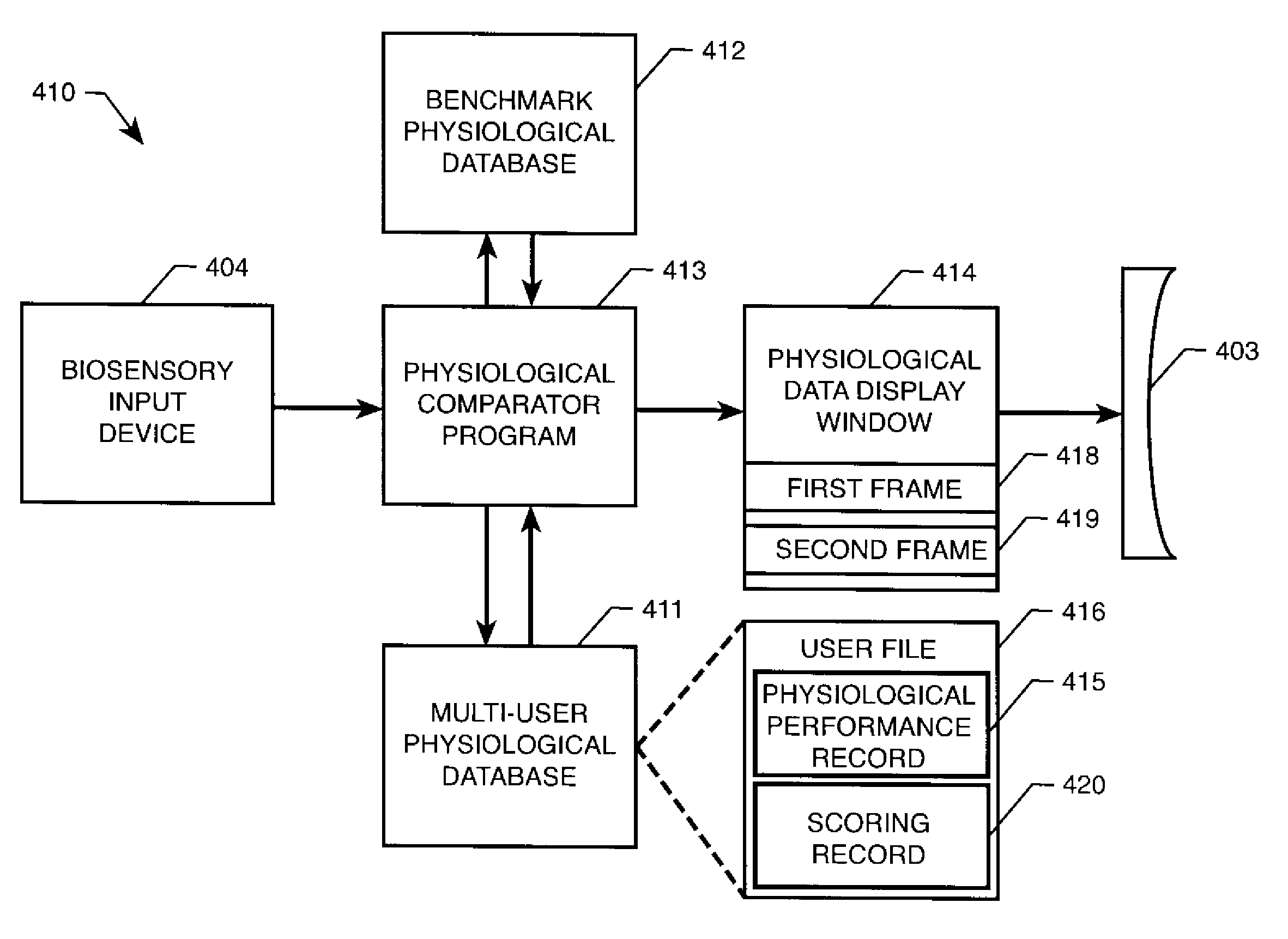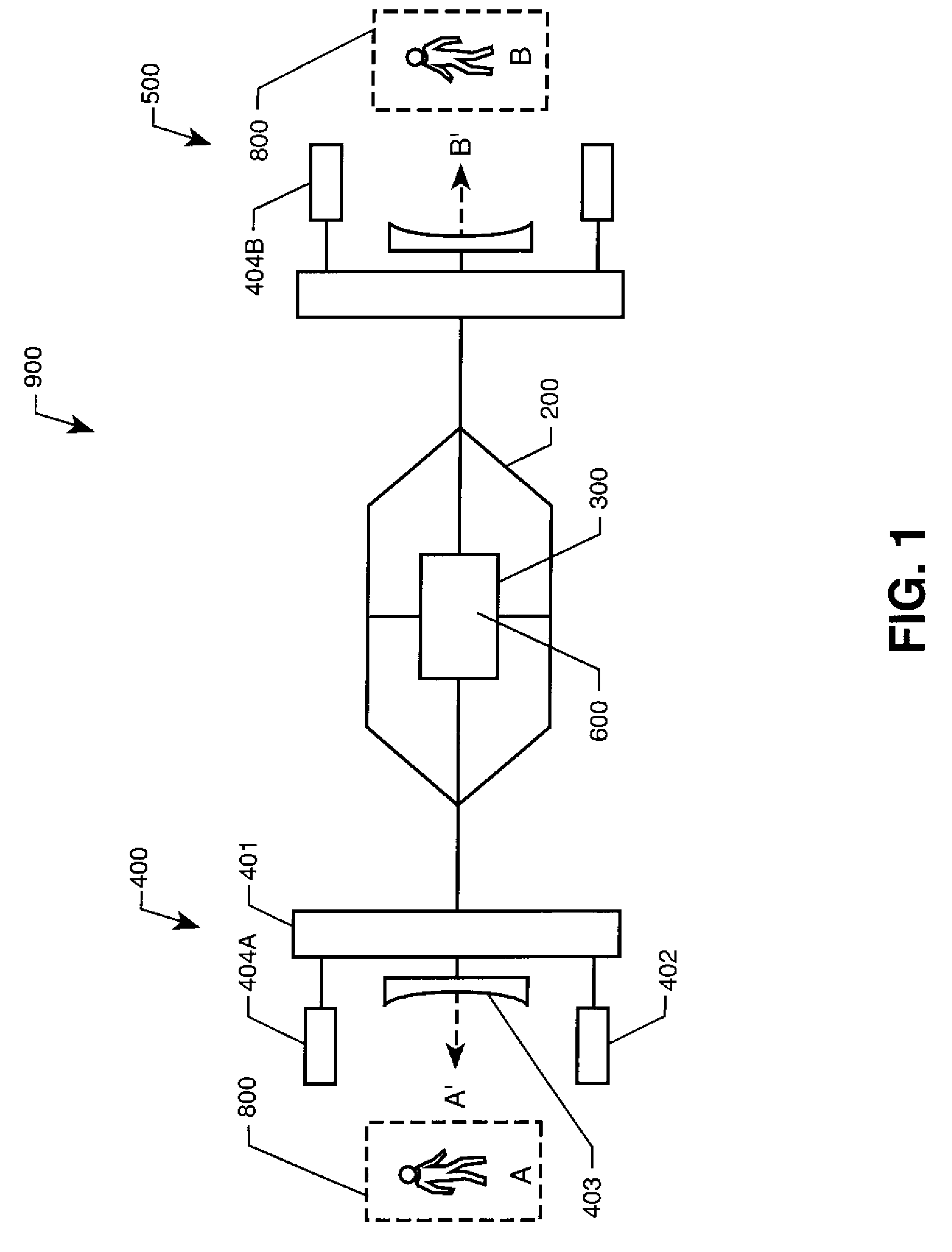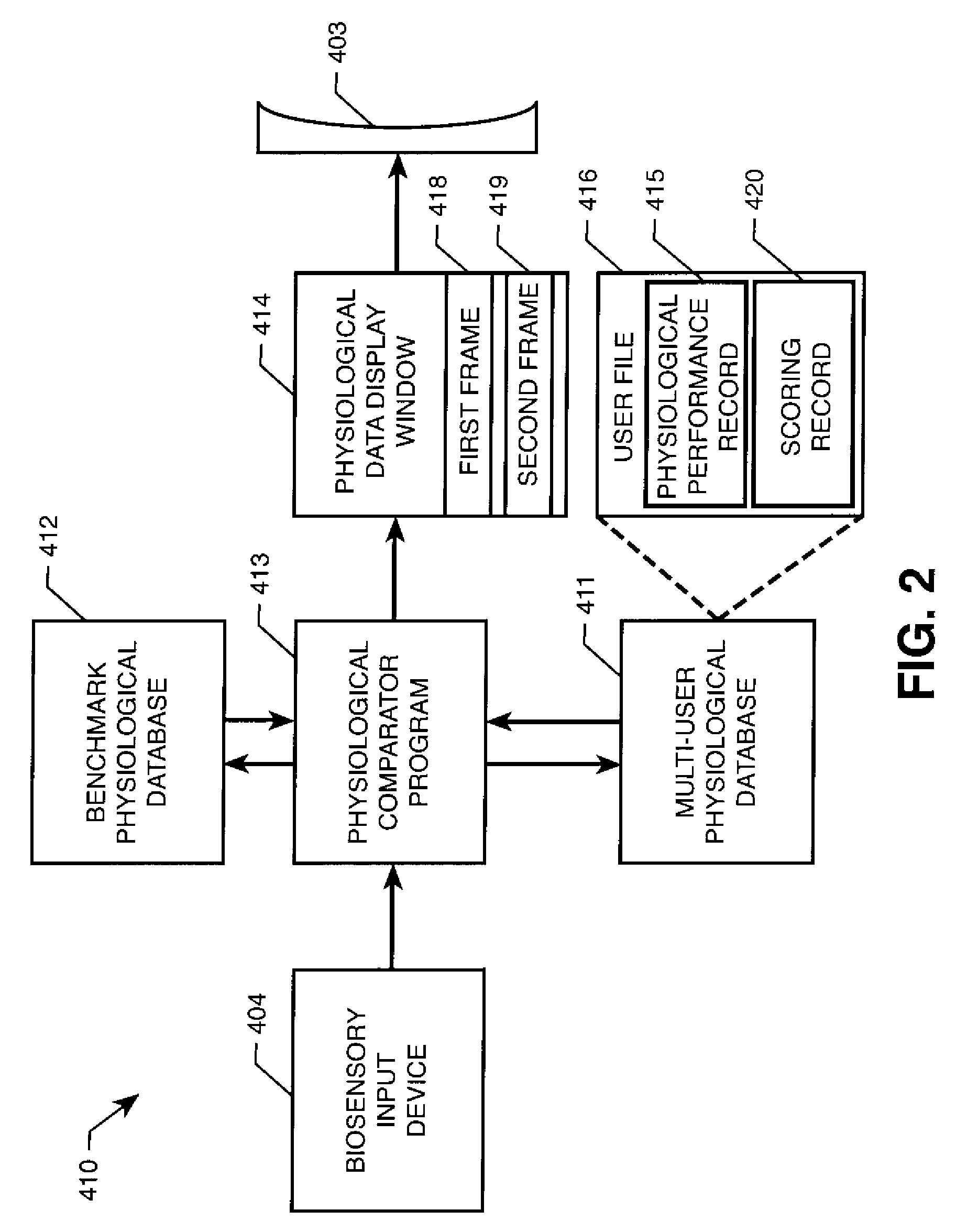Physiological user interface for a multi-user virtual environment
a virtual environment and user interface technology, applied in the field of physiological user interface for a multi-user virtual environment, can solve the problems of limited the effectiveness of biofeedback training incorporated into videogames and computer simulations, non-compliance with biofeedback, etc., and achieve the effect of teaching physiological self-regulation
- Summary
- Abstract
- Description
- Claims
- Application Information
AI Technical Summary
Benefits of technology
Problems solved by technology
Method used
Image
Examples
Embodiment Construction
[0020]The human autonomic nervous system is responsible for the autonomic execution and control of a number of physiological functions that are either vital to life or to the normal performance of a bodily function or to the normal performance of organ systems supportive of life. Some common examples of human physiological functions include, respiration, digestion, circulation, excretion, sight, and hearing.
[0021]In general, human physiological functions may be associated with one or more biomechanical effects, such as for example, a palpable pulse or the diastolic or systolic blood pressure, measured, for example, by a sphygmomanometer. Human physiological functions may also be associated with a bioelectrical signal, such as, for example, the time-dependent magnitude and sign of the wave of cardiac depolarization measured and drawn by an electrocardiogram (“ECG”).
[0022]Accordingly, biomechanical effects or bioelectrical signals associated with human physiological functions produce ...
PUM
 Login to View More
Login to View More Abstract
Description
Claims
Application Information
 Login to View More
Login to View More - R&D
- Intellectual Property
- Life Sciences
- Materials
- Tech Scout
- Unparalleled Data Quality
- Higher Quality Content
- 60% Fewer Hallucinations
Browse by: Latest US Patents, China's latest patents, Technical Efficacy Thesaurus, Application Domain, Technology Topic, Popular Technical Reports.
© 2025 PatSnap. All rights reserved.Legal|Privacy policy|Modern Slavery Act Transparency Statement|Sitemap|About US| Contact US: help@patsnap.com



